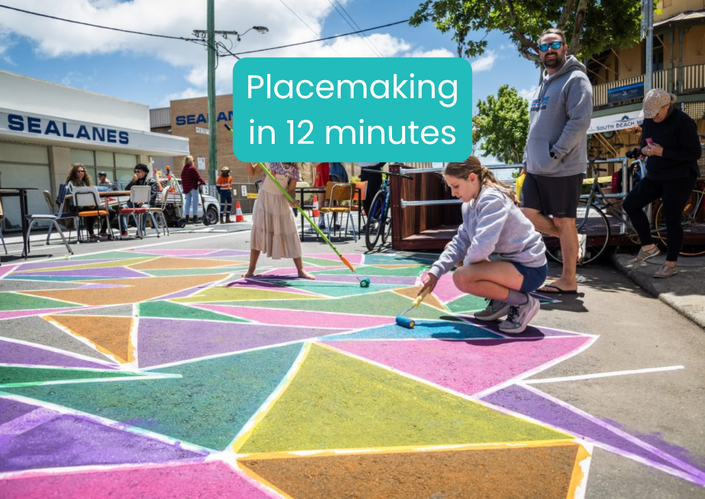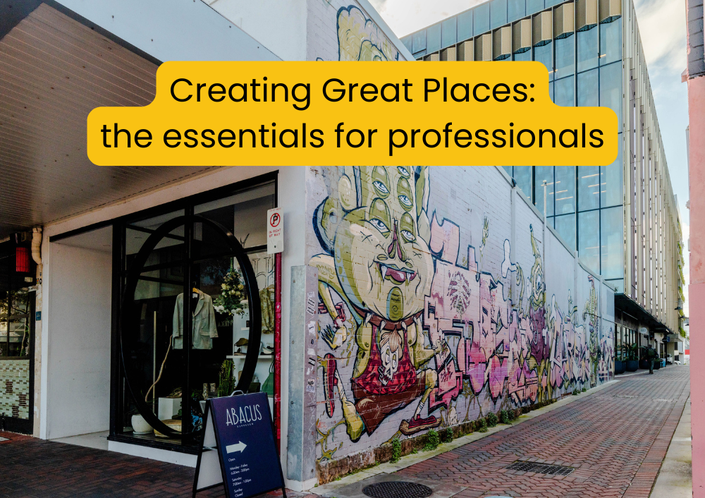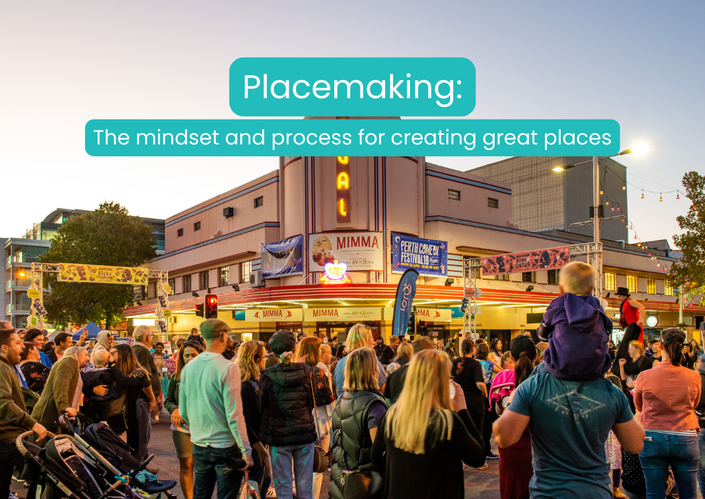What is placemaking?
Placemaking is about bringing different people, organisations and disciplines together to create positive changes in a place or area. This also includes improving existing spaces to make them more comfortable, accessible, active and attractive.
It is a growing global movement that aims to improve not only the physical elements of a space, but also the way people think and feel about the world around them. It promotes agency and active citizenship through the collaborative, iterative art and process of creating better places.
People and places are the focus.

Placemaking definition
Placemaking is a philosophy and an iterative, collaborative process for creating public spaces that people love and feel connected to.
What placemaking is and is not

Project for Public Spaces popularised the term in the mid-1990s. It defines placemaking as:
"As both an overarching idea and a hands-on approach for improving a neighborhood, city, or region, placemaking inspires people to collectively reimagine and reinvent public spaces as the heart of every community. Strengthening the connection between people and the places they share, placemaking refers to a collaborative process by which we can shape our public realm in order to maximize shared value.
More than just promoting better urban design ... (and) with community-based participation at its center, an effective placemaking process capitalizes on a local community's assets, inspiration, and potential, and it results in the creation of quality public spaces that contribute to people's health, happiness, and well being."

Important ingredients of great places
- People who care for and look after the space
- Climate appropriate shade and sun
- Trees and/or greenery. Humans respond to green
- Safe and welcoming
- People and activity. People attract people
- Places to sit and relax. Encourage people to stay awhile
- Easily accessible for people of all ages and abilities
- Things to see and do - reasons to be there
Placemaking can help to create positive momentum, even if a place is slowly declining.
It can help to turn good places into great places.

Placemaking is a collaborative innovation process

Placemaking is a collaborative innovation process that works horizontally across different disciplines, interests and perspectives. It builds from expertise in urban design, economic development, events, activation, asset-based community development, urban planning, arts, engineering, infrastructure, sustainability and more.
For many decades, the city-building professions have generally overlooked the role of public space as the fulcrum of great cities. Instead, they’ve trained their focus narrowly on buildings, businesses, roadways, infrastructure, and regulatory frameworks. From traffic engineers to economic development specialists, these professions have retreated into ‘silos’ that separate them from each other and can blind them to the overall needs of cities, their citizens and the natural world.
Each profession pursues narrow, disconnected goals that add up to far less than the sum of their parts. They also ignore the complexity of places, which are intricate and interconnected systems, just like diverse rainforests.
The place-based approach can help to align different people around a shared agenda of creating a better place.
Places should influence projects
Placemaking is about moving from project-led or discipline-led approaches to people-and-place influencing what kind of projects should be done, how and why. Places should influence projects.

Our online courses go into further detail on topics such as:
- Looking at streets and public spaces through different eyes
- Properly engaging local stakeholders and the community
- The mindset and skills needed for successful place-based projects
- Diagnosing place 'hardware' and 'software' issues and opportunities
- Turning problems into opportunities
- Shifting from Doing To and For to Doing With and enabling action By communities
- Using strengths-based approaches
- Comparing masterplanning with place enabling
- Reducing risks and saving money
Turning principles and ideas into action
These are some of the courses we offer, with all our free and paid courses available on this page.
Want more information?
Our courses go into much more detail, or you can contact us for further information.





